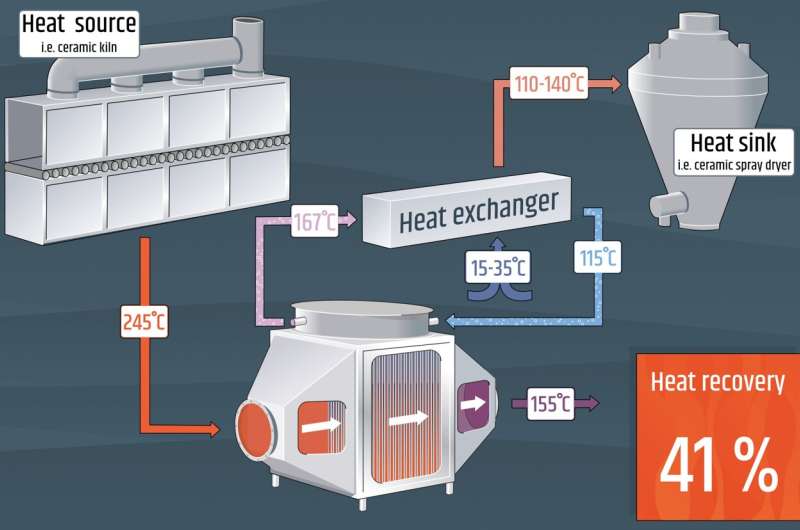Recycled factory heat benefits industries and the environment

Industrial processes account for more than a fourth of Europe's primary energy consumption and produce a tremendous amount of heat. EU funded research is closing the circle with novel systems that recover waste heat and return it for reuse in industrial process lines.
Most process heat is lost to the environment as exhaust or discharge streams. Recovering and reusing this heat reduces energy consumption, emissions and pollutants. It enables industries to reduce costs, meet regulations and improve their corporate images with broader impacts on competitiveness. One of the greatest challenges is dealing with the immense variety of exhaust temperatures and constituents, which makes it difficult to use off-the-shelf heat exchangers. The EU-funded ETEKINA project has developed novel tailor-made heat pipe heat exchangers (HPHEs) successfully piloted in the ceramics, steel and aluminum industries.
A broad design space meets the needs of complex exhaust streams
Heat pipes are tubes sealed at both ends and containing a working fluid at saturation, meaning any increase in temperature will cause it to vaporize. They are used for heat management in applications from computers to satellites and spacecraft. In an HPHE, the heat pipes are installed in bundles attached to a plate and placed in a casement. A heat source such as exhaust gas flows into the lower section. The working fluid vaporizes and rises in the pipes, where a heat sink such as cool air flows into the top part of the shell and absorbs the heat. The enclosed structure minimizes loss while the plate minimizes cross-contamination between the exhaust gas and the air. HPHEs require smaller surface areas for greater heat transfer relative to conventional approaches. This makes them very efficient and mitigates fouling. The challenge is choosing the parameters such that the greatest possible heat is recovered from complex waste streams. There are so many parameters, including the number, diameter, length and material of the heat pipes; their assembled configuration; and the working fluid.
From models to factories
Given the immense parameter space, computational fluid dynamics and transient system simulation (TRNSYS) modeling were developed to help scientists design bespoke HPHEs for three industrial applications. For example, the crossflow, finned, fouling resistant HPHE (the fins increase surface area to augment heat transfer) designed to recover waste heat from a ceramics roller hearth kiln was the first ever in this configuration applied in the ceramics industry. The heat pipe shells were made of carbon steel and water was the working fluid. "We have exceeded the project's target of a minimum of 40 % waste heat recovery from exhaust streams. Our HPHEs are also much more compact than conventional heat exchangers, saving valuable factory space. In addition to their efficiency, which lowers costs and emission, they also have a short return on investment," says Hussam Jouhara of Brunel University London and technical and scientific coordinator of the ETEKINA project. The systems successfully recovered heat with no cross-contamination and funneled it back to the factory to be used in other processes. The HPHE concept developed in the context of ETEKINA is highly scalable and can be adapted to any type of industrial exhaust over a large temperature range and for a variety of heat sinks, including air, water, and oil. A novel replicability tool will help quickly assess the waste heat recovery potential of future customers.


















